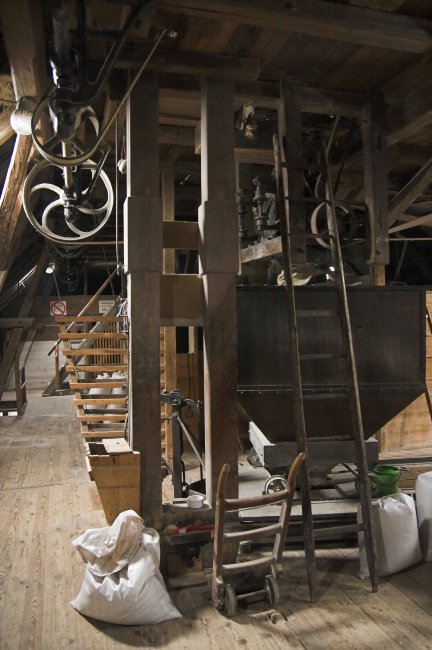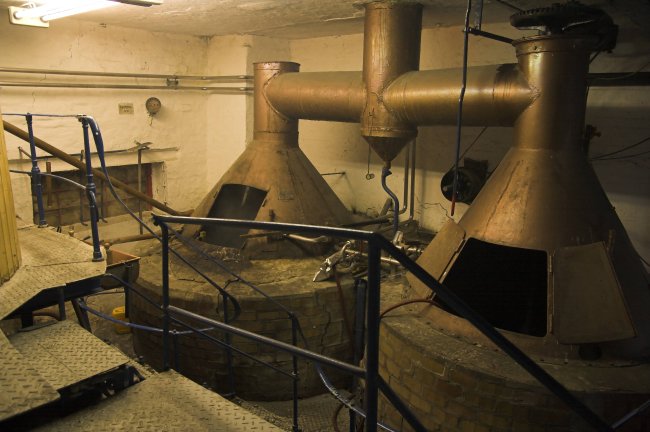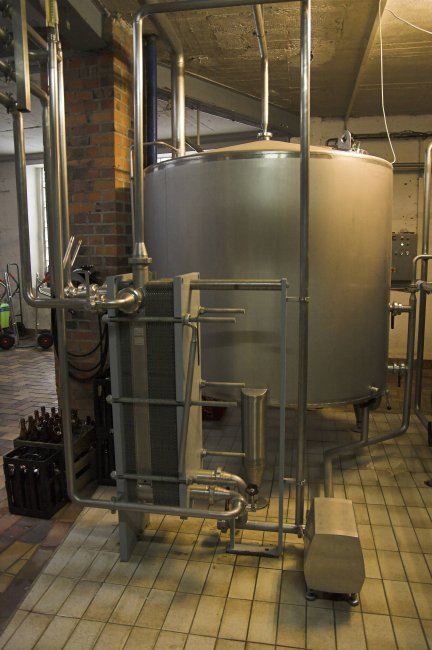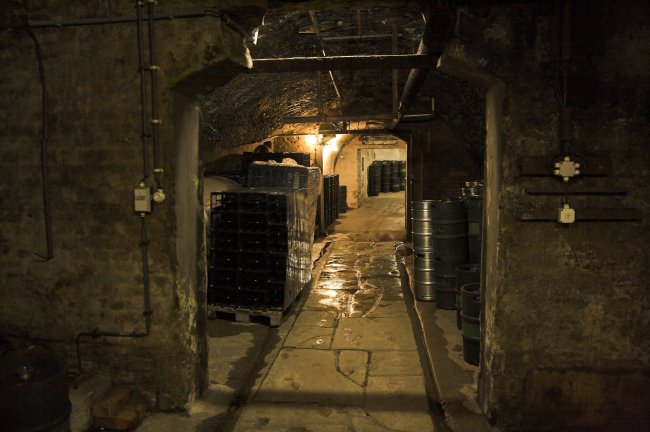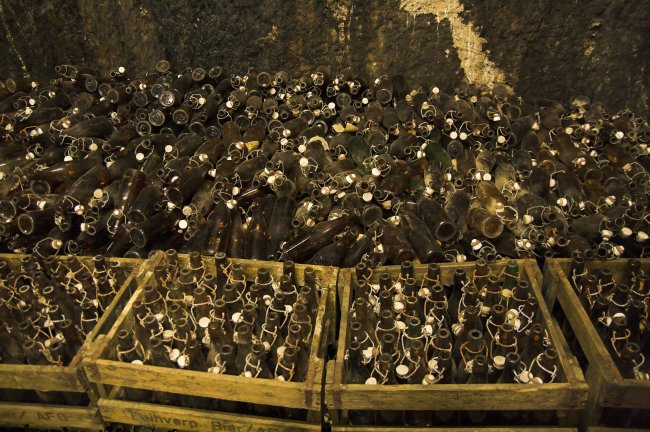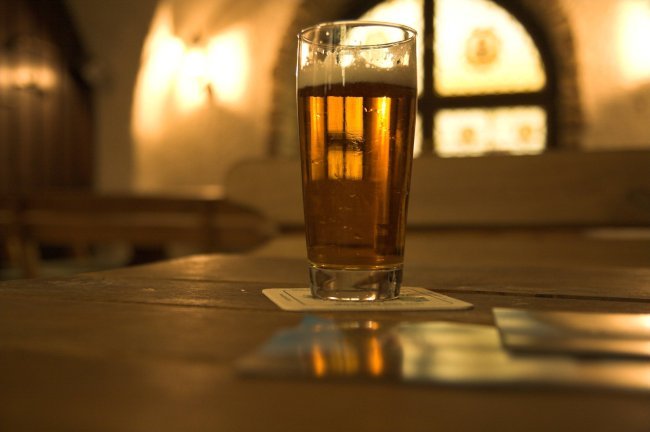Difference between revisions of "Museums- und Traditionsbrauerei Wippra"
| Line 1: | Line 1: | ||
| + | {| style="width:800px" | ||
| + | | | ||
| + | |||
(''museum and traditional brewery, Wippra, Germany'') | (''museum and traditional brewery, Wippra, Germany'') | ||
| Line 40: | Line 43: | ||
This is the brewery's Pilsner style beer. As mentioned above, it is slightly darker than the common German Pils or Helles though it is brewed from 100% pilsner malt. The increased color stems from the old brewing process and equipment. It is also much milder in bitteness and hop character than the typical German Pilsner beer. It almost completely lacks hop aroma and comes close to a Munich Helles with its bitterness and malt character. | This is the brewery's Pilsner style beer. As mentioned above, it is slightly darker than the common German Pils or Helles though it is brewed from 100% pilsner malt. The increased color stems from the old brewing process and equipment. It is also much milder in bitteness and hop character than the typical German Pilsner beer. It almost completely lacks hop aroma and comes close to a Munich Helles with its bitterness and malt character. | ||
<div style="clear:both;"></div> | <div style="clear:both;"></div> | ||
| + | |||
| + | |} | ||
Latest revision as of 12:34, 24 January 2011
|
(museum and traditional brewery, Wippra, Germany) The brewery's home page Google Maps link I visited this brewery on a trip back to Germany and I'm glad I did so. This brewery is far from the modern fully automated breweries of today. There beer is still brewed the old fashion way with direct wood fired kettles in small batches. And amazingly the beer produced there is some of the best German beer I drank on that trip. As a matter of fact, their Schwarzbier even got second place at the 2002 Beer Worldcup in Denver. And rightfully so. The brewery is in this brick building in the back of a small hotel. Brewing tradition in Wippra dates back to the year 1480. The grain mill is located in the attic of the brewery. Here the grain is loaded into the hopper by hand. The whole mill is mounted on scale which allows the grain to be weighted as it is added to the hopper. The milling of the grain is done dry with no conditioning of the husks. Only 3 different grains are used here (Pilsner, Munich and a dark crystal malt) to produce their beers. The use of only a minum number of different malts is typical for brewing in Germany as it is just not economical or necessary to keep many different malts at hand. After milling, the grain falls into the lauter tun, which at this point serves as the dough-in vessel. Dough-in happens at about 58 *C, which is above the protein rest and seems to be due to the high modification of the modern malts. But this is as much as I was able to find out about the mashing process. The tour was guided by a novice apprentice and the brewmaster was to busy to answer the many questions that I would have liked to ask. After doughing in, the mash is transferred to the mash kettle (the one on the right) where it is heated with a direct wood fire. The amazing thing is that there is no temperature contol and it is up to the brewmasters skill to hit the correct temperatures by adding fire wood. I believe that they currently don't use decoction mashes since the used malts don't require them anymore, but that they must have in the past. Most likely decocting in the mash kettle and keeping the main mash in the lauter tun. Just like many homebrewers do this now. For lautering, the mash is returned to the lauter tun and lautered using batch sparging. This picture shows the lautergrant with its four drain valves. And as you can see, there is not much concern regarding oxygen pick-up on the hot side. To get into the boil kettle the wort even has to drop the full height of the boil kettle. I did however notice that their pilsner is darker than a Pilsner brewed by a modern brewery: oxygene pick-up in the brew-house is known to lead to daker beers as well as reduced shelf life. But the latter is not a concern for this brewery and there was no negative taste to the beer at all. One may also notice that the lautered wort is not brilliant, just a little cloudy and free of chunks. For me, this puts an end to the lauter wort clarity discussion that comes up once in a while. Starting with the whirlpool, the rest of the brewing process is done in stainless steel. This picture shows the whirlpool vessel and the plate chiller. The main reason for updating this part of the brewery were sanitation concerns that existed with the old system which used wooden vats for fermentation and most likely a coolship for cooling the wort. The primary fermentation is still done in open fermenters, which is why we weren't allowed to see them. I was told that the brewmaster is worried, that moving to a closed fermentation in conical tanks may affect the taste of the beer. All 3 beers produced here (Pilsner, Schwarzbier and Bock) are fermented at 8 *C and then lagered for 4 weeks. This is part of the old ice cellar which is only used as storage now. This cellar has been driven into the sorounding shist by hand. These bottles and boxes are intended to be refurbished. Once refurbished regulars can buy their own labeled boxes. This is the brewery's Pilsner style beer. As mentioned above, it is slightly darker than the common German Pils or Helles though it is brewed from 100% pilsner malt. The increased color stems from the old brewing process and equipment. It is also much milder in bitteness and hop character than the typical German Pilsner beer. It almost completely lacks hop aroma and comes close to a Munich Helles with its bitterness and malt character. |

